All you need to know about preparing for your adventure. Click here for our Japan Tour Essentials.
Welcome to our Tour
Tour Structure
Our tours follow a well-established format to ensure a balanced and enjoyable experience. After the start of the tour and a warm-up ride, we typically ride for 5 to 7 consecutive days before having a rest day.
Each riding day follows a similar structure:
- We begin with breakfast, aiming to leave the hotel between 08:30 and 09:00.
- The morning consists of about two hours of riding, followed by a snack break at a café, if one is available.
- We ride another two hours before stopping for lunch, and then continue for 1 to 3 hours to our next hotel.
Afternoons often provide opportunities for extra rides, should you wish to add more kilometres to your day. Once we are in the hotel, between 14:00–16:00, you will have some free time to explore or rest.
Before dinner, we gather for a drink and a briefing about the next day’s ride. During this time, the guides will share insights about the local area, route highlights, and any historical points of interest. Following the briefing, we dine together as a group.
Rest days occur either midway through a stage (for tours lasting two weeks or more) or at the end of a stage. If the rest day is at the end of a stage, it may also serve as a changeover day, when some riders join or leave the tour. Rest days are a chance to explore the town we’re staying in, take care of practicalities such as laundry or visiting an ATM, or simply rest. For this reason, we aim to schedule rest days in interesting towns with useful facilities.
If you prefer to ride on a rest day, you’re welcome to take your bike out for a spin. Similarly, if you wish to rest on a cycling day, the van is always available to accommodate you.
This rhythm of 5 to 7 days of cycling followed by a rest day continues for the duration of the tour, creating a well-paced balance of activity and relaxation.
First Day Guidance
Whether you’re starting at the beginning of an Epic tour or joining us for a single stage, your first day will follow a relaxed and welcoming format. Please dress in regular clothes for the initial meeting. Look out for the guides in their Ride & Seek gear at the appointed time.
The day begins with lunch together, during which the guides will give you an overview of the tour ahead. Afterwards, we’ll ensure your bike is ready for the journey—a quick check to ensure it’s travelled well if it’s your own, or that your hire bike fits comfortably. We’ll then set a time to meet in bike gear for a warm-up ride to get you settled in. The day concludes with pre-dinner drinks and your welcome dinner, where you’ll have some more time to meet everyone in the group. The following day, the cycling officially begins.
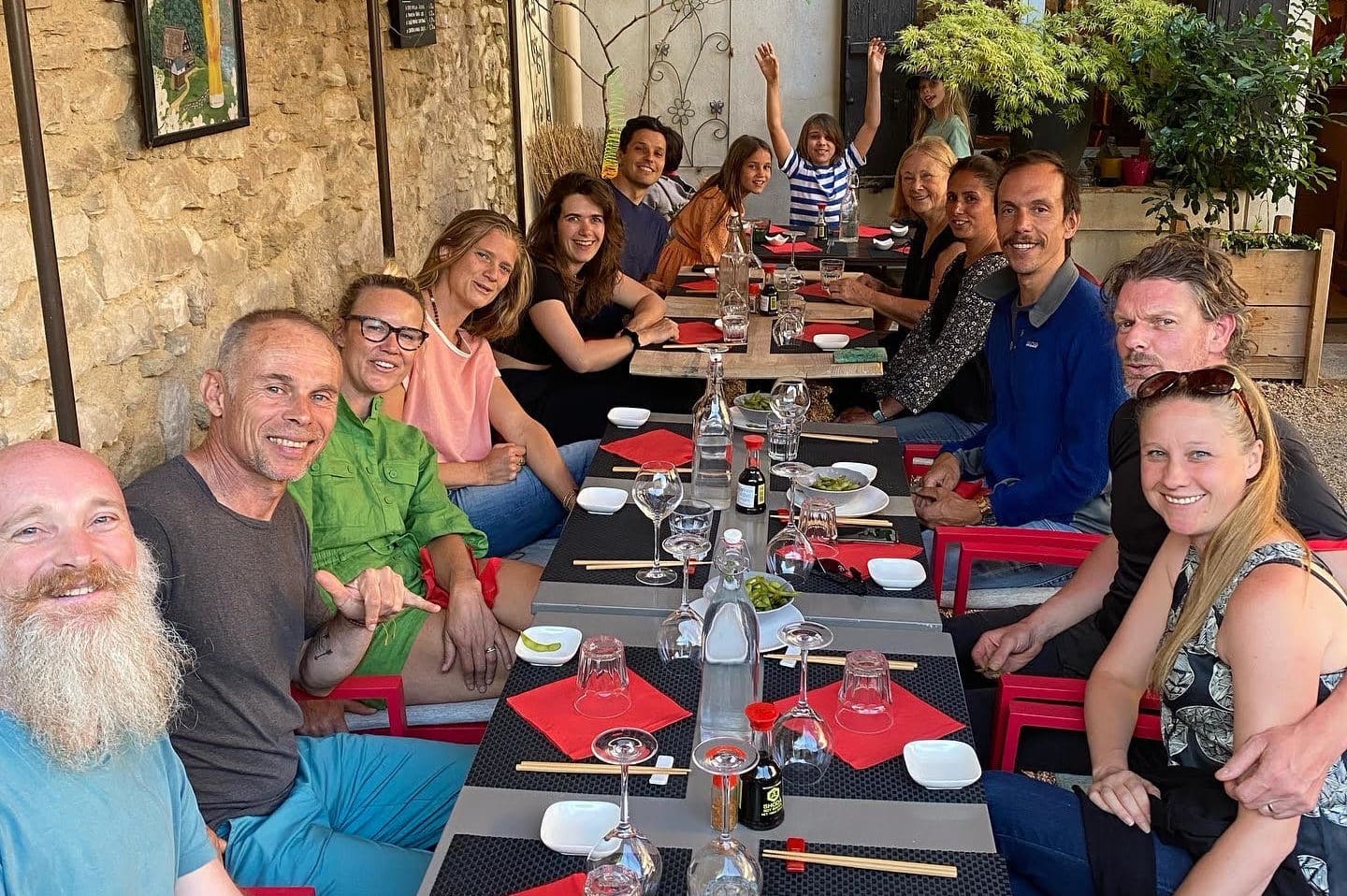
Additional Nights
If you require help with pre and post hotel bookings in the hotels we use on tour, please contact us at office@rideandseek.com and we can get these booked for you. Our booking agent charges a €10 per night fee for the service but as part of this we provide our own favourable group booking rates, a preferential cancellation policy and a guarantee that you’ll be able to stay in the same room as when you are on the tour.

Do I need travel insurance?
The short answer: yes
Travel insurance is essential for all our tours. Here’s why:
- Travel insurance is more than health insurance – While health insurance may cover medical emergencies abroad, it doesn’t protect you from unexpected travel disruptions. Travel insurance includes coverage for trip cancellations, delays, lost luggage, and more.
- Emergency medical evacuation – Many of our tours explore remote areas where advanced medical facilities may not be readily available.
Good travel insurance ensures you’re covered for medical evacuation to the nearest suitable hospital and, if necessary, provides support for a companion to travel to you or arranges your transport home. - Protection for personal belongings – Travel insurance covers valuable items like your bike in case of loss, damage, or theft. Giving you peace of mind on the road.
- Acknowledging tour risks – Before the tour, you’ll be asked to complete a medical questionnaire and sign a risk waiver. These ensure that everyone understands the inherent risks involved in bike tours and reinforces the importance of having comprehensive travel insurance in place.
- Cancellations and unexpected costs – We strongly recommend purchasing travel insurance as soon as you book your tour (after paying your deposit). This way, you’re covered for potential costs if you need to cancel, including airfare and tour expenses.
Our recommended providers – We’ve found these travel insurance providers are popular among our riders:
- Tin Leg
- AXA
- Travel Guard
- Covermore
- Allianz
Having the right coverage means you can focus on enjoying the adventure, knowing you’re protected against the unexpected.
What to Pack
Key considerations for packing
Packing for a cycling tour can vary greatly depending on individual preferences, but here’s our guide to help you cover the essentials:
Cycling Kit – The nature of our tours, with frequent hotel changes, means you’ll want to pack plenty of cycling gear. While you’ll find ways to wash your kit, it’s best to have spares so you’re not stuck with damp clothing on a chilly morning. Rest assured, once a week on rest days, there will be opportunities to do laundry either at the hotel or a laundromat. We also aim to provide a mid-week cycling kit laundry service to help reduce the amount of kit you need to bring.
Evening Wear – Evening wear can remain casual throughout the tour. While we’ll dine in some lovely restaurants, there’s no need to pack formal attire. Comfortable, neat casual clothing is perfectly suitable for all occasions.
Weather Preparedness – Given the varied terrain and duration of our tours, you’ll need to pack for a range of weather conditions:
- Warm Weather: Lightweight and breathable gear is essential for
sunny days. - Cool and Wet Weather: A good waterproof jacket or windbreaker that fits into your jersey pocket is a must for unexpected rain. We always recommend bringing layers to adjust to changing conditions.
- Rain Options: If it’s a downpour, we recommend you wait it out or ride in the support van. So long as there is no lightning, we are happy to give you the choice of whether to ride or not.
Bike Equipment – We carry a comprehensive tool kit and spare inner tubes and tyres to handle common issues. If you’re bringing your own bike, ensure you pack any spares specific to your bike, such as derailleur hangers or unique components. Refer to our “Bike Information and Fitting” section for a recommended list of spares.
Additional Tips:
- Bring a multi-tool for small adjustments while on the road.
- Carry a pump or CO2 inflator and other essentials you typically bring on your rides.
- Lights are strongly recommended for visibility, especially in poor weather or low-light conditions.
Luggage Allowance
One suitcase (23kg) and one day bag.
Like an aeroplane, we have limited space. Your suitcase will travel in the back of our van or in the trailer and will available once you check into the hotel. Your day bag will travel in the front of the van for easy access during the day.
Your guides will appreciate your cooperation more than you know when they’re playing luggage Jenga every morning. Thanks for helping us keep things running smoothly.
The day bag is on us.
If this is your first tour with us, we will give you a personalised Scicon kit bag on tour (pictured). If you’ve already received one, please bring this along with you on all your Ride & Seek tours.
We love these bags for the way they keep things orderly in the van and for their fantastic functionality. The bag is big enough for anything you might need access to during the day.
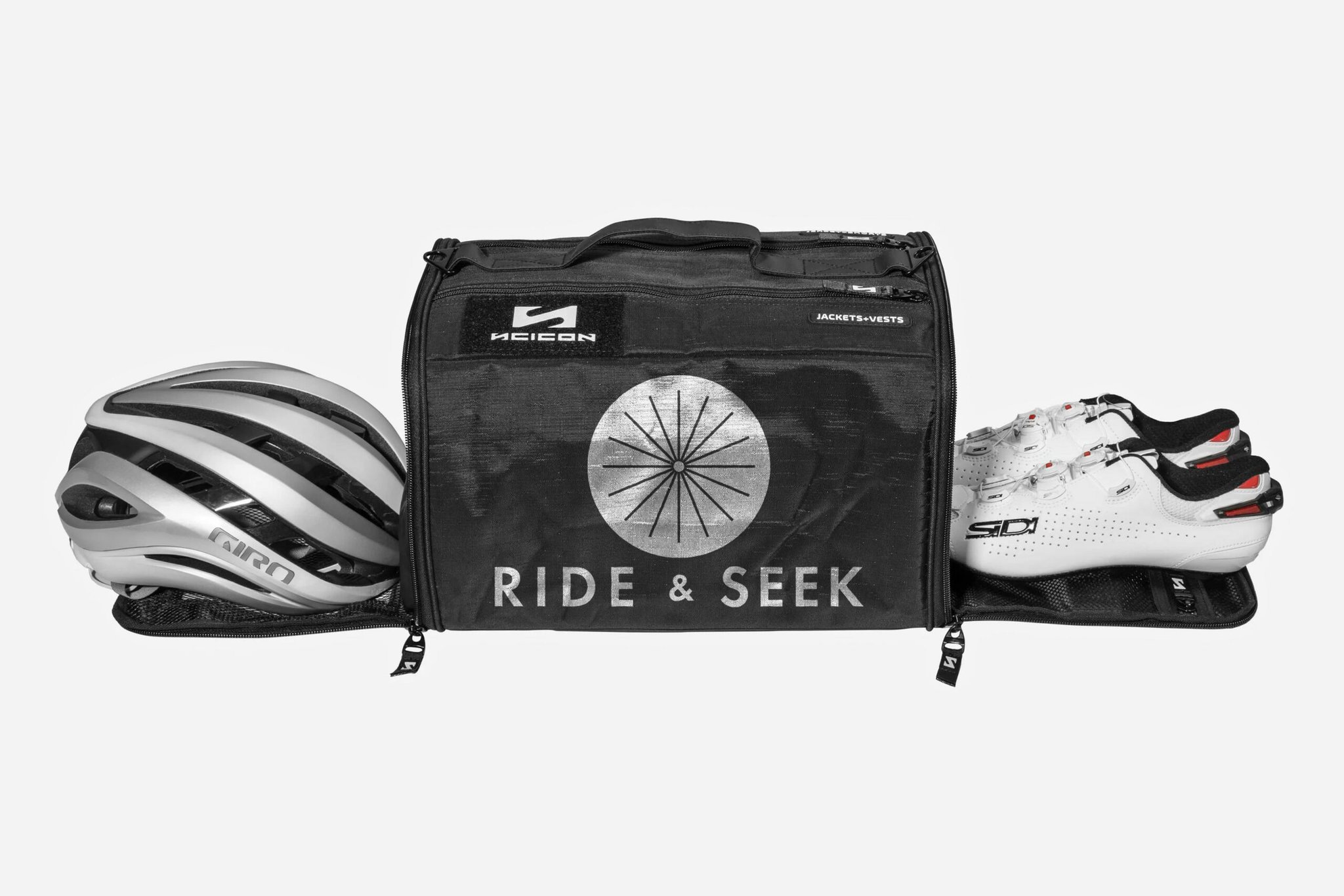
Bike bags and cases
We can only accommodate foldable bike cases on our tours. Those rigid hard cases might offer great protection, but they’re absolute space hogs in our vehicles, and honestly, shipping them ahead has become a logistical nightmare these days.
The good news? There are some seriously impressive foldable bike cases on the market now! Brands like Evoc, Scicon, and Bike Box Alan make soft cases that offer excellent protection during travel but then collapse down to a fraction of their size once your bike is built up. These genius designs give your bike the safe journey it deserves without commandeering half our van space for the entire tour.
Some of our favourites include:
- The Evoc Bike Travel Bag Pro – collapses to about 1/3 its original size.
- Scicon AeroComfort 3.0 – folds into itself when empty.
- Pika Packworks EEP – folds flat for easy storage.
If you have questions about specific bike case models or need advice on the best option for your ride, just give us a shout before your trip.
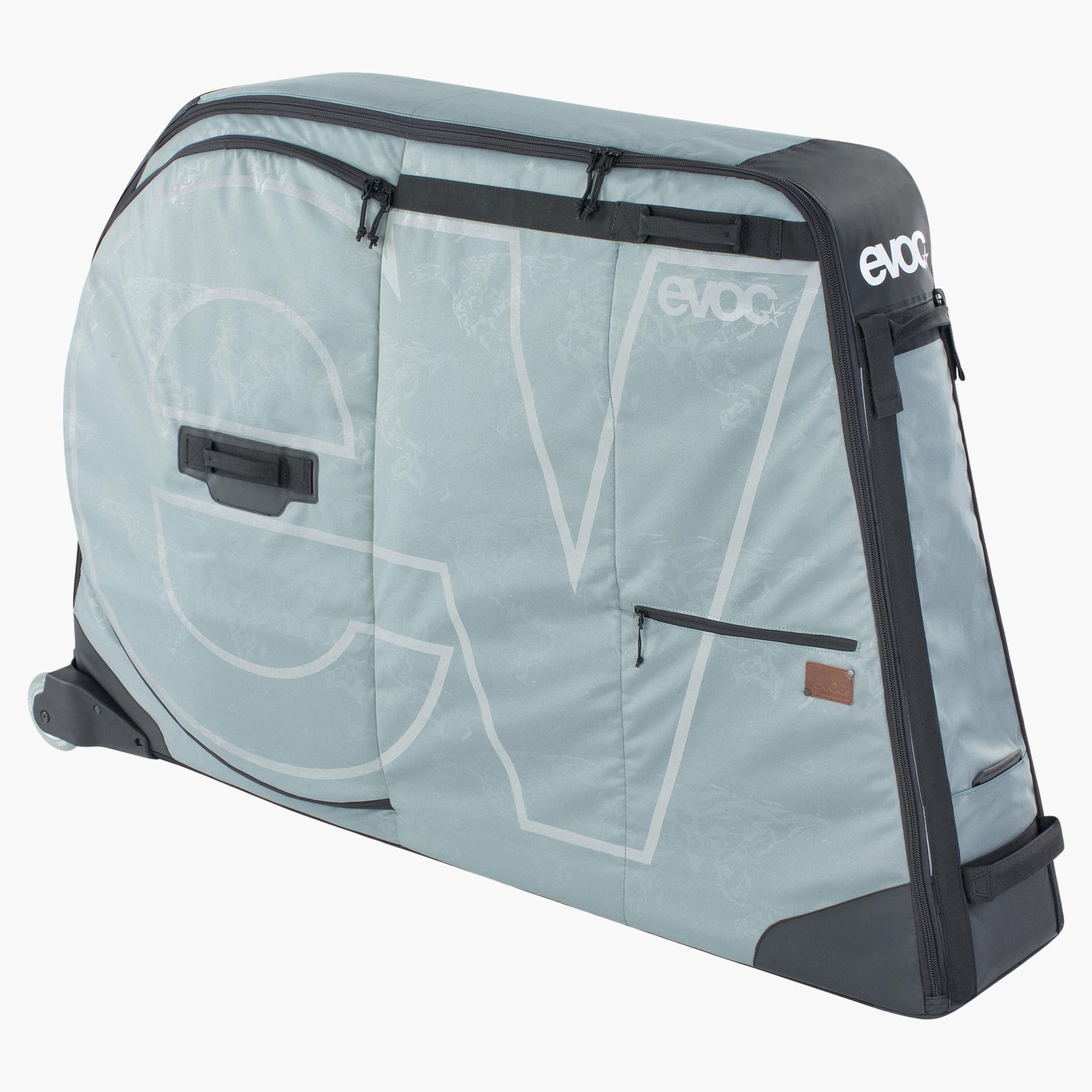
Suggested Packing List
Essentials
On the bike:
- 2-3 Pairs of cycling bibs.
- 2-3 Cycling jerseys.
- Bike helmet.
- Cycling pedals to match your shoes.
- Rechargeable front and rear lights.
- 3 pairs of athletic socks.
- Bike gloves
(short and long-finger). - Windbreaker or rain jacket.
- Insulating long-sleeve bike jacket.
- Athletic shoes or cycling shoes.
- Bifocal riding glasses if required to view Garmin routing instructions.
Off the bike:
- Comfortable walking shoes.
- Long-sleeve shirt.
- Lightweight clothing that can be layered.
- Sweater or jacket.
- Pyjamas/sleepwear.
- Sun protection: hat, sunglasses, small sunscreen.
- Small bag/backpack to use as a day pack.
- Toiletries & medications.
- Private first-aid kit.
- Smartphone and charger cables.
- Booking info for air, rail, etc.
- Passport /ID (and photocopy).
- Debit/credit cards.
- Health/travel Insurance info.
- Click here for Electric converters and adapters.
- Cash for incidentals and guide gratuities.
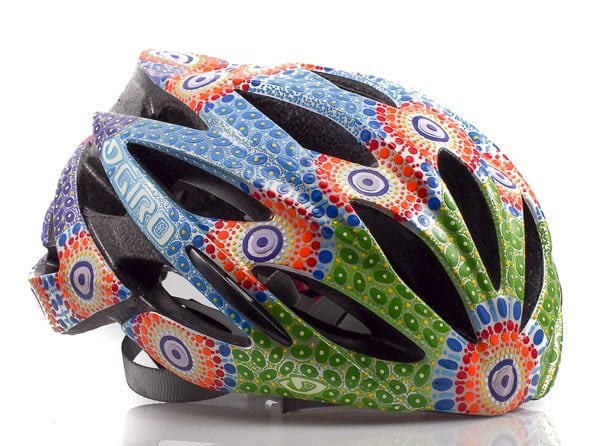
Optional items
- Arm and knee/leg warmers.
- Shoe/toe covers, cleat covers, spare cleats.
- Neck gaiter or buff.
- Favourite energy gels.
- Insect repellent.
- Journal/laptop/tablet.
- GPS device/Garmin and charger.
- Portable charger for devices.
- Eye mask and earplugs.
- Laundry kit (soap, stain remover).
- Laundry bag.
- Cash in local currency.
- Scripts for additional medications.
- Scripts for additional medications.
- Quadlock phone case and handlebar attachment. Perfect for securing your phone while riding.
- Riding Glasses with internal mirror.
What we provide
- Ride & Seek Cycling Jersey.
- Cycling Bibs for our Full Epic riders.
- Water bottle (1 or 2 if required).
- Garmin 1030 Edge computer and mount – feel free to bring your own.
- Luggage tags.
- Snacks on tour.
- Electrolyte powder.
- Rechargeable lights for hire bikes – feel free to bring your own.
- Saddle bag with tube, pump and tools for hire bikes.
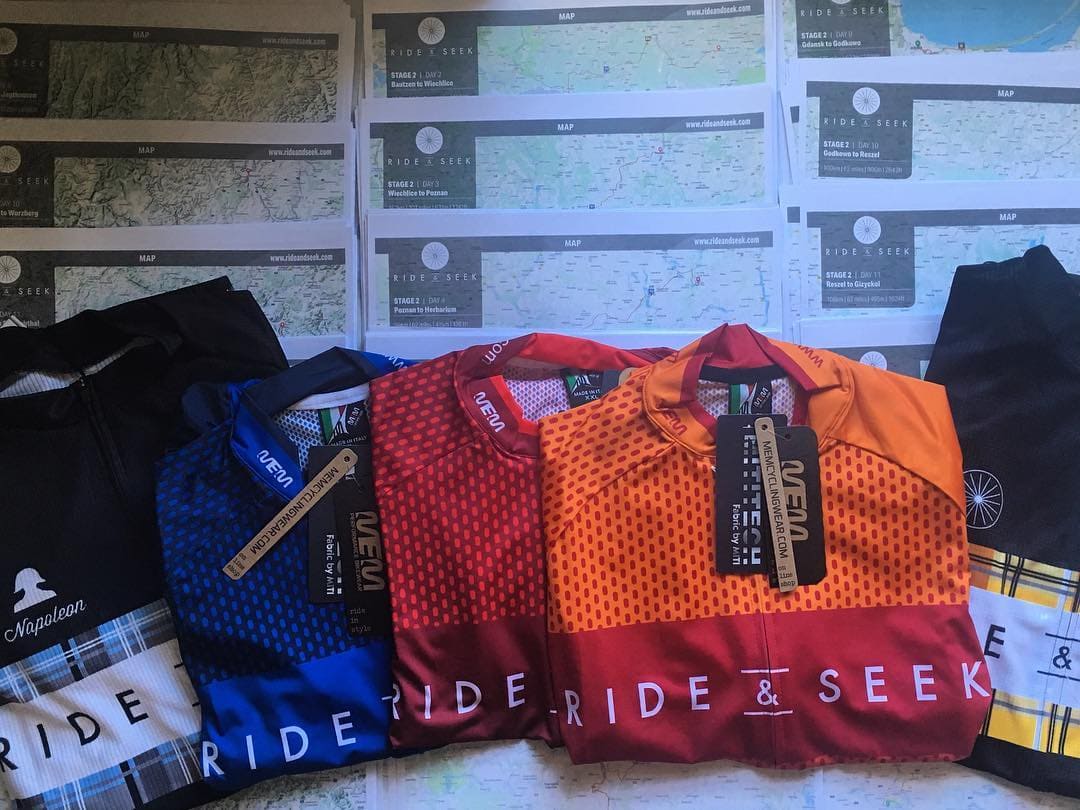
Daily Schedule and Meals
Breakfast, lunch and dinner
Breakfast is included with all our accommodation. While the typical ‘continental’ breakfast in some hotels might not be the most substantial, we make sure the van is stocked with plenty of snacks so you can always start your day satisfied. In fact, the van serves as a mobile café, so if there’s something specific you enjoy, let us know—we’ll do our best to have it available for you.
Lunch is usually provided by us and is designed to be quick, delicious, and flexible. Our guides often prepare picnics along the route, featuring sandwiches, salads, fruit, cold drinks, and assorted snacks, allowing you to tailor your meal and go back for seconds (or thirds!). Occasionally, we’ll stop in a town for a change of pace, and on those occasions, lunch will be at your own discretion.
Dinners are an opportunity to savour the regional cuisine of the areas we travel through, ranging from rustic farmhouse meals to fine dining. We aim to dine as early as possible, in line with local customs. Once a week and on scheduled rest days, dinner is not included, giving you the freedom to explore local restaurants (with our recommendations if needed), indulge in a dish you’ve been craving, or enjoy a quiet evening to yourself.
Drinks
Drinks at dinner, other than still and sparkling water, are not included. If you’re interested in sampling regional wines, our guides will be happy to provide recommendations. Any wine, soft drinks, or other beverages ordered at dinner should be paid for directly at the restaurant, added to your room bill, or settled with the guide.
Cycling Safety
Safety tips
- Check the bike regularly; essential if it is disassembled for transport or if involved in an accident. If unsure, check with one of our guides. Key areas to check are the brake assembly, the tightness of wheel axles, seat and handlebar, alignment of the rear dérailleur and the condition of the tyres.
- Be seen. Wear bright clothing and use lights, especially in tunnels and ideally when riding in low light conditions and when heading into the sun.
- Ride and descend to your ability and to the road conditions and weather.
- Be aware. Know what is ahead and behind you. Expect the unexpected and have an escape plan.
- Use oncoming vehicles, blind corners and hill crests as a reminder to check what’s behind, as these will reduce the amount of space a passing vehicle will give you. Move to the shoulder, speed up or slow down accordingly.
Riding etiquette
Riding as a group/pelaton:
- Continue to think for yourself.
- Communicate your actions and dangers verbally and/or with understood hand signals (E.g. ‘right turn’, ‘left turn’, ‘slowing’, ‘stopping’, ‘rolling’, ‘car up’, ‘car back’, ‘gravel’).
- Keep your front wheel to the left or right of the rear wheel in front and know which way to swerve if something suddenly happens.
- Try to understand the cycling patterns of each rider, and don’t make any sudden or uncharacteristic moves.
- Hold the handlebar securely and cover both brakes in case of an unexpected bump or reduction in speed.
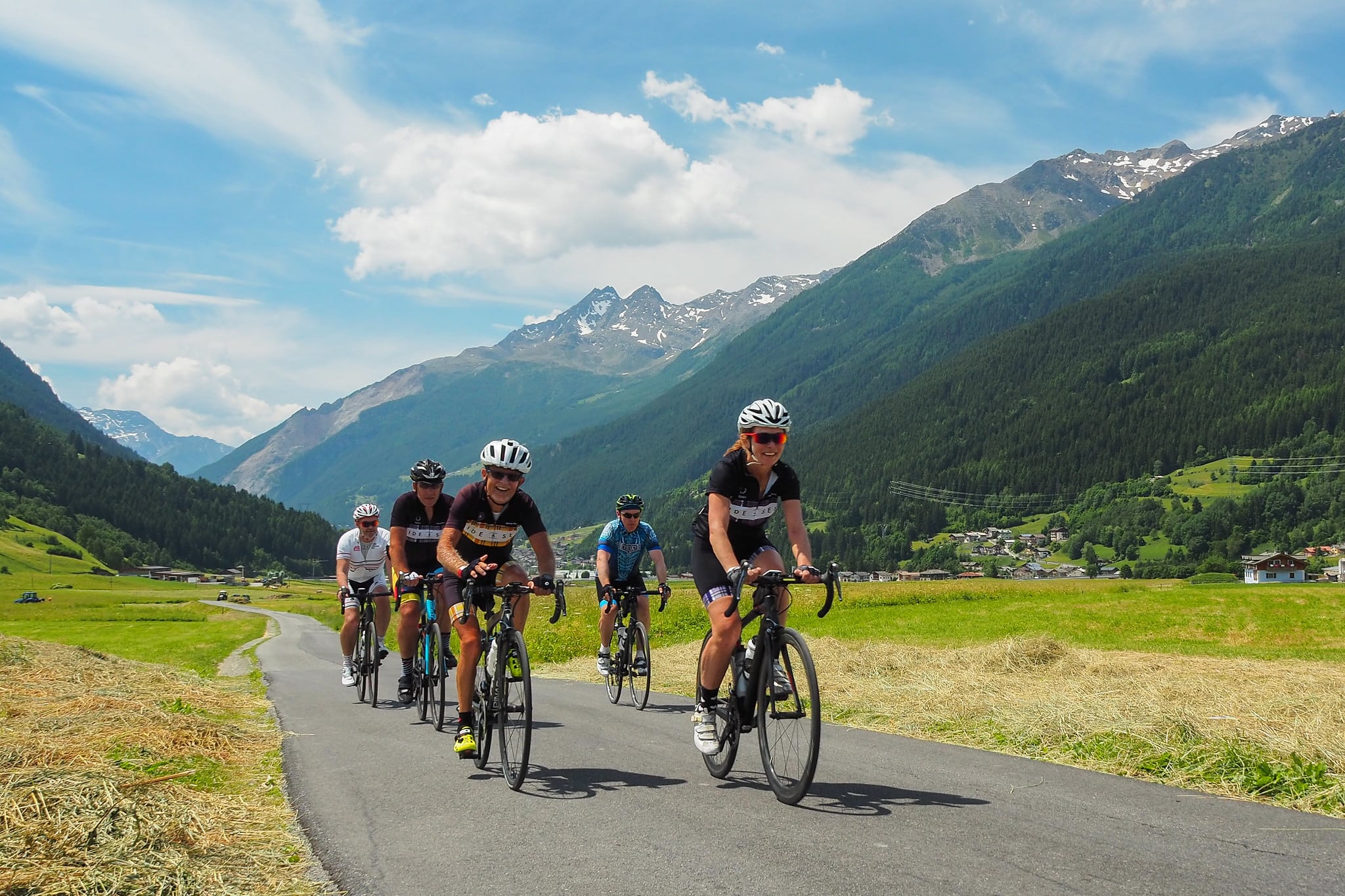
Rules of the road
- Wear a helmet at all times and ensure that it is fitted correctly.
- Obey and familiarise yourself with the local traffic laws and signage.
- Only ride two abreast when safe to do so. Watch for white lines on the road, an unbroken line is a good indicator to return or remain single file and also a legal requirement.
- If you notice traffic accumulating behind you, return their courtesy and pull off for a moment to let traffic pass.
- Make your presence known, and make eye contact with motorists when possible.
- Operate your bike consistently and predictably, avoiding erratic movements. Maintaining a straight line is the best way for motorists and other cyclists to predict your movements and pass safely.
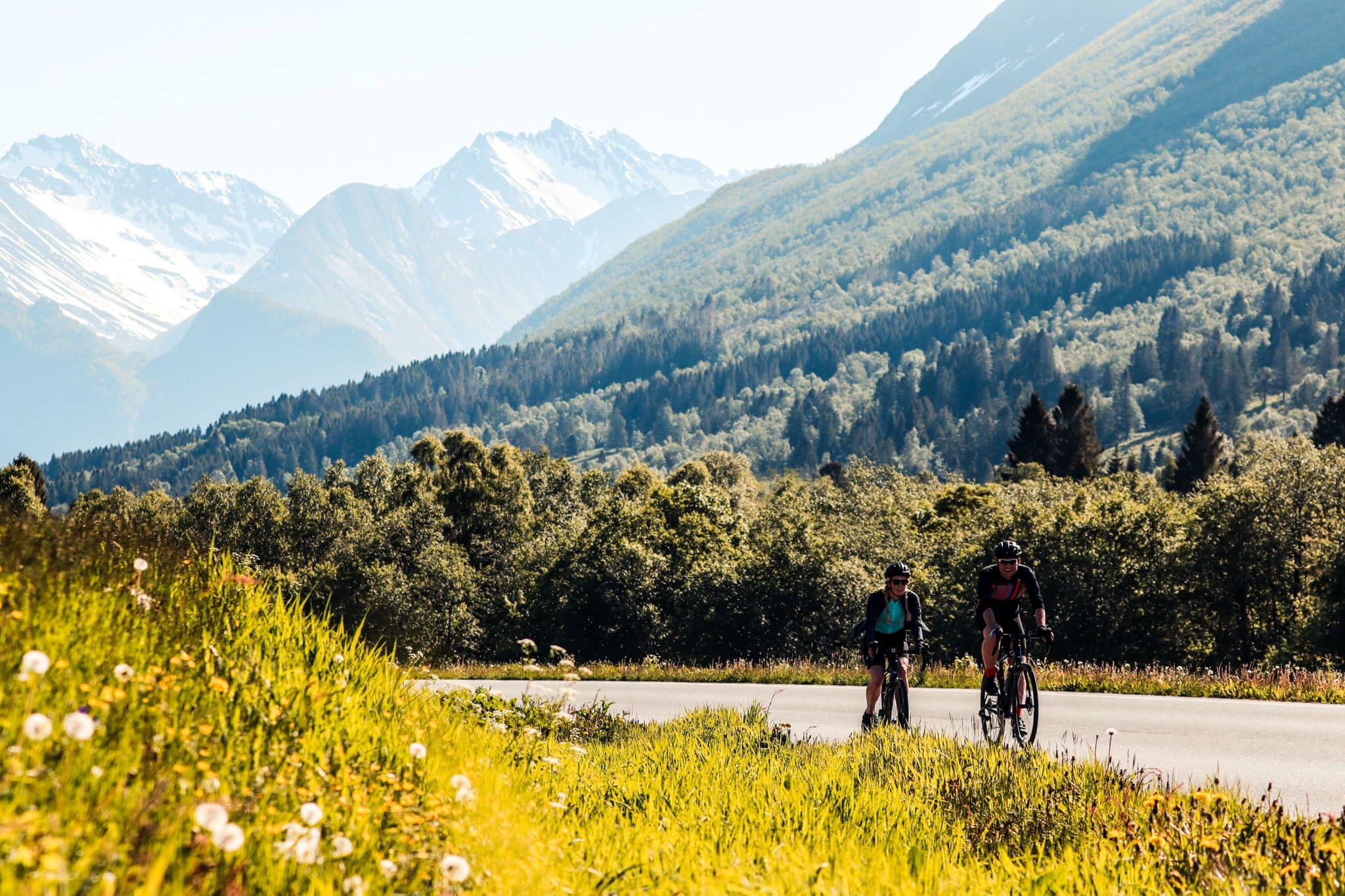
Bike Information and Set-up
Bike set-up
Your Bike – If you’re bringing your own bike, it’s essential to give it a full service beforehand to ensure it’s in optimal condition for the tour.
On the first day, there will be time to set up your bike, and our guides will be on hand to assist with any adjustments needed.
Hire Bike – Rest assured that maintenance and spares are fully covered during the tour for those riding one of our hire bikes. Our bikes are equipped with a wide range of gears, carefully selected to handle the elevation profiles of each stage.
If you have bike fit measurements, please feel free to share them with us in advance. This allows us to set up your hire bike to your specifications before your arrival. Our hire bikes are fitted with flat pedals as standard. If you prefer to use your own pedals, ride with clip-in pedals, or use your saddle, please bring them along, and we’ll install them for you.
Hire bike insurance
Renting a bike from us is a great way to ensure you have a well-maintained ride tailored to the tour. However, while we cover minor wear and tear (such as tyres and brake pads), you are responsible for the bike’s care during the tour, including any major damage, theft, or loss.
To give you complete peace of mind, we offer comprehensive hire bike insurance for €150.
- This insurance covers:
- Accidental damage.
- Repair costs.
- Theft.
- Replacement bike hire if the bike cannot be repaired promptly.
By choosing our insurance, you can ride worry-free, knowing you’re protected against unforeseen incidents and costs.
What to bring
Hire bike:
- A helmet (provided if required).
- Your preferred pedals
(flat pedals are provided as standard). - Rechargeable front and rear lights
(provided if required). - Your own water bottles, if preferred.
- Your own bike saddle, if preferred.
Own bike:
- A helmet.
- A spare tyre.
- Rechargeable front and rear lights.
- Your own water bottles, if preferred.
We also recommend bringing these small spare parts specific to your bike. They’re inexpensive but invaluable if they’re needed during the tour:
- 1 x rear derailleur hanger.
- 1 x spare front spoke.
- 2 x rear spokes (one for the drive side and one for the non-drive side).
These items can be ordered in advance from your local bike shop and will give both you and our bike mechanic peace of mind, ensuring you’re prepared for any unforeseen issues.
Navigation and Connectivity
Navigation tools
Our tour routes are navigated using a combination of Garmin GPS units, the Ride with GPS app, and printed day sheets that include key information and a map of the day’s ride. Additionally, there will always be at least one guide riding and another in a support van (often two cycling guides and two in support vehicles).
If you have your own GPS device, such as a Garmin, Wahoo, or Hammerhead, feel free to bring it along. On Day 1, we’ll load the routes onto your device. Please note:
- For Garmin units, we can provide maps if required.
- For Wahoo, Hammerhead, or Garmin Edge 1050 devices, we recommend downloading the necessary maps for the countries or region where you’ll be riding in advance.
Strava
Whether you’re a fan or just curious, Strava is a great tool for tracking your rides and staying connected. We’ve created a private Ride & Seek club where riders can share their achievements and keep in touch post-tour. Click here to join and submit your request to become a member.
Social media
Stay in the loop by connecting with us on Facebook (click here) and Instagram (@rideandseekers). On Facebook, you can follow our latest news, tour updates, and photos, and engage with your fellow riders. Instagram is a visual feast showcasing our adventures and the incredible scenery we ride through.
Using phones abroad
Smartphones have become essential travel companions, especially for accessing the internet, staying in touch with the group, and navigating during the trip. It is essential that you have internet access on your phone while travelling with us, as this will be crucial for:
- Receiving real-time updates via the group WhatsApp chat.
- Using Google Maps to locate meeting points or explore the area.
Sharing your location with guides if assistance is needed.
To ensure seamless connectivity:
- Check your current mobile plan for international data roaming rates and activate a plan suitable for your travel needs. Many providers now offer affordable or inclusive roaming options.
- Consider an eSIM, a simple and economical way to stay connected abroad. We recommend country-specific or regional eSIMs from Airalo, (click here) which are easy to set up and widely used by our guests.
- Ensure your phone is eSIM-compatible and unlocked (note: most phones are unlocked unless tied to certain American contracts).
Internet access
Most places we travel to have internet access, and nearly all accommodations offer complimentary Wi-Fi. However, high-speed connections are not always available, particularly in remote regions.
To ensure reliable access, consider purchasing an eSIM for your phone. This way, you won’t have to depend solely on Wi-Fi, which can sometimes be slow or unavailable in parts of a hotel. With an eSIM, you’ll always have internet at your fingertips, making your experience even more convenient.
Useful Apps and Technology
Google Maps
The world’s most comprehensive navigation app and a must-have for any traveller. Key features include:
- Routing options for driving, walking, cycling, or public transport.
- Real-time public transport schedules and route previews, with options to minimise transfers or prioritise specific modes (e.g., bus, metro).
- Points of interest: Search for restaurants, attractions, or landmarks with user reviews.
Google Translate
A versatile tool for breaking language barriers.
- Offline Translation: Download language files for quick translations even if you can’t get phone internet.
- Camera Translation: Instantly translate menus, signs, or documents by pointing your camera at the text and watch as it magically changes it into english.
- Conversation Mode: Two-way instant speech translation for communicating with locals.
- Helps build confidence and independence while navigating foreign countries.
Strava
A favourite among cyclists and athletes.
- Route Tracking: Track your ride, analyse performance, and monitor stats.
- Photo Integration: Share ride photos and achievements with friends.
- Join our Ride & Seek Strava club to connect with fellow riders and share your journey here!
Travel Phrasebook /Translator
Ideal for quick language help in areas without connectivity.
- Preloaded Phrases: Access commonly used words and phrases recorded by native speakers.
- Voice Recording: Record and playback phrases to refine your pronunciation.
- Keyword Search: Quickly find phrases relevant to your situation.
- Works offline, so it’s always accessible.
Tripcast
Perfect for sharing your travel memories in a private, interactive way.
- Shared Albums: Invite friends and family to follow along with your tour photos.
- Interactive Maps: Photos and videos are automatically pinned to a map, creating a timeline of your journey.
- Commenting & Liking: Engage with others by liking or commenting on their posts.
- Photobook Creation: Transform tour photos into a physical photobook post-trip.
Relive
A creative way to relive your rides and share your experiences.
- 3D Video Stories: Create stunning video recaps of your rides, integrating photos taken along the way.
- Customisation: The paid version lets you edit videos, add music, and refine your story.
- A great way to impress friends and family with a visual summary of your day’s adventure.
Ride with GPS
This powerful cycling navigation app will be your digital guide on tour. Beyond a detailed daily itinerary and location-specific highlights, the app offers the following features:
- Route and Elevation Details: View your day’s route, climbs, and descents in detail.
- Turn-by-Turn Navigation: Voice-guided and
on-screen directions. - Offline Navigation: Access maps and navigation tools even without an internet connection.
- Interactive Points of Interest: Discover key landmarks, viewpoints, and services along your route.
- The above features are offered as a paid premium feature of the app, but is provided for free, even without an account, during the tour.
Essential for staying connected on tour and beyond.
- Messaging & Calls: Secure, real-time messaging, voice, and video calls.
- Group Chats: Keep updated with guides’ notifications and reminders during the tour.
- Location Sharing: Easily send your location to guides or fellow travellers.
- Multimedia Sharing: Share photos, videos, or voice messages with your group.
- Operates over data, so ensure your phone has data roaming enabled or an active eSIM for seamless usage abroad.
Training and Preparation
Training tips
Preparing for one of our tours is an exciting part of the adventure. While the grading of your tour gives a clear idea of the difficulty, the multiday nature of our trips means they are all physically demanding endeavours. We hope your training so far reflects this, but we also understand that life sometimes gets in the way and not everyone has the luxury of fully committing to a structured training plan. If you’re feeling a little ‘undercooked,’ don’t worry—we’re here to help.
The key to a successful and enjoyable tour is conditioning your body to spend multiple hours on the bike, day after day. Saddle time is critical—getting used to being in the saddle for extended periods will make a huge difference. The last thing you want is to spend the first few days of the tour dreading sitting down!
Our tours are not a race, and you can always ride at your own pace. With a reasonable level of stamina, the daily distances should feel achievable. That said, we strongly recommend incorporating some back-to-back long rides into your preparation. These rides will help you adapt to the demands of consecutive days on the bike, mimicking the experience of the tour.
While it’s important to train consistently, be mindful not to overdo it. Arriving fatigued or ‘overcooked’ can diminish your experience. Plan to taper your training in the week leading up to the tour, allowing your body to rest and your energy levels to peak. Cramming in last-minute rides the weekend before is tempting but counterproductive. Arrive fresh, energised, and ready to enjoy the journey.
Take a break when you need it
Our support van is there for you, serving as a sag wagon if you ever need a lift. Whether it’s a tough climb, fatigue, or simply needing a rest, there’s absolutely no shame in hopping in. We’d much rather you take a break than push too hard on one day and end up unable to ride for the next two! Listen to your body, and don’t hesitate to signal if you need some assistance.
The more prepared you are, the more you’ll enjoy the tour. There’s still plenty of time to build your fitness, so start your training now—it’s never too late to make progress.
Need help with your training?
If you’re looking for professional guidance, our training partner, Angus Burrell of FTP Training, can help. Angus is a highly experienced coach who has worked across various cycling disciplines. He also has a deep understanding of bikepacking and multiday touring, making him uniquely equipped to prepare you for the challenges ahead.
- Remote Coaching: Train from anywhere in the world with Angus’s remote coaching platform.
- Tailored Plans: Access a 12-week training plan designed specifically for our tours or opt for personalised coaching to ensure you arrive at your adventure in peak condition.
Start your journey to being tour-ready today. Contact Angus directly at: a.burrell@ftptraining.com or visit FTP Training for more information.
General Information
Tour documentation
Beyond the information provided on the website, we will provide you with:
- Tour Overview, which contains a table of the ride data and an overview of the tour, which can be easily shared with friends and printed.
- Tour Essentials (this page).
All remaining information will be sent out via email. Please ensure you have office@rideandseek.com saved in your contacts so you don’t miss any communications.
In the lead-up to the tour, we’ll update you with the following details:
- Tour-Specific Blogs: Articles on history, culture, and destinations en route.
- Reading Recommendations: Suggested books to deepen your connection with the regions you’ll explore.
- Guest Name List.
- Hotel List.
- Approximately two weeks prior to the tour, we will send an email containing any last-minute information and your guides’ contact details.
Ride with GPS
Once on tour, you will receive a detailed daily itinerary, route, and elevation details through this app. The app is very easy to use and even offers turn-by-turn navigation as a backup or alternative to Garmin navigation.
Expected weather
The tour dates have been carefully selected to align with the best possible weather for cycling, aiming for the year’s ‘Goldilocks’ weather window—neither too hot nor too cold. However, weather can be unpredictable, which only adds to the adventure! Given the tour’s multi-regional route and varying elevations, it’s important to prepare for a range of conditions, from warm sunshine to cooler temperatures. Packing versatile cycling gear for both hot and cold weather will ensure you’re ready for anything. For more specific climate and weather details, visit worldweather.org.
Money matters
- ATMs & Cash: ATMs are available in cities and larger towns along the route and are the easiest way to access cash. For convenience, we recommend withdrawing cash at the airport upon arrival. Keep in mind that the route avoids major urban centres to prioritise safer and more scenic cycling. Having a week’s worth of cash on hand is advisable.
- Card Payments: Credit and debit cards are widely accepted at most hotels and restaurants we visit. However, smaller cafés and shops may only accept cash.
- Extra Costs: Typical additional expenses include drinks at cafés, alcoholic beverages, and 1-2 lunches and dinners per week.
- Currency Preparation: You may wish to obtain some local currency before departure or at the airport to ensure you’re prepared upon arrival.
Guide tipping
We handle tipping in restaurants and hotels, but tipping your guides is customary in the industry. As we host multinational groups, we understand cultural differences in tipping norms. Rather than suggesting a percentage like many other tour companies, we recommend a daily amount based on your tour duration. A guideline is €10 (or your local currency equivalent) per guide per day if they have met your expectations.
Further information
We hope this document answers most of your questions, but additional resources are available:
FAQs: For more details about the tour, check our FAQs by clicking here.
Terms & Conditions: Familiarise yourself with our terms and conditions.
Website Resources: Explore more about the tour, including information on food and wine, history, the espresso grading system, and testimonials, at www.rideandseek.com.